

Learn about SCS Engineers Air Emissions Services
On March 26, 2020, the EPA issued the COVID-19 Implications for EPA’s Enforcement and Compliance Assurance Program memorandum. This temporary policy allows for enforcement discretion for noncompliance resulting from the pandemic. The memorandum requires regulated entities to take specific steps, then document how COVID-19 caused the noncompliance and efforts to return to compliance. Noncompliance issues may include but are not limited to, routine monitoring, reporting, and testing.
EPA is the implementing authority for programs where the consequences of the pandemic may affect reporting obligations and milestones set forth in settlements and consent decrees. These consequences may affect the ability of an operation to meet enforceable limitations on air emissions and water discharges, requirements for the management of hazardous waste, or requirements to ensure and provide safe drinking water.
These are very distinct situations that the EPA plans to manage differently, as described on the EPA website page https://www.epa.gov/sites/production/files/2020-03/documents/oecamemooncovid19implications.pdf
Not all states and commonwealths have adopted a temporary discretionary enforcement policy. As an example, the Illinois EPA has not adopted a discretionary enforcement policy, and all state statutes and regulations remain in effect. Should your organization face a situation where regulatory compliance may be at risk due to COVID-19, this special circumstance may still be a mitigating factor in the event of an enforcement action by Illinois EPA.
If you are uncertain if you will be able to meet your compliance obligations due to the COVID-19 pandemic, and you need assistance please visit our locations to find the office nearest you or contact an SCS professional at .
SCS periodically prepares Technical Bulletins to highlight items of interest to our clients and friends who have signed up to receive them. We also publish these on our website at https://www.scsengineers.com/publications/technical-bulletins/.
Our most recent Bulletin summarizes the 2020 National Emission Standards For Hazardous Air Pollutants: Solid Waste Landfills. SCS Engineers will continue to post timely information, resources, and presentations to keep you well informed. These include additional guidance, industry reaction, and a webinar with Pat Sullivan on our website and social media accounts.
2020 NESHAP Technical Bulletin.
SCS Contact Information:
Locate an SCS professional near you, or contact SCS at .
SCS will continually update coverage of this Rule on our website blog and social media channels on SCS Engineers LinkedIn and SCS Engineers Facebook. If you have any questions regarding this Technical Bulletin, feel free to contact your local SCS Engineers representative.
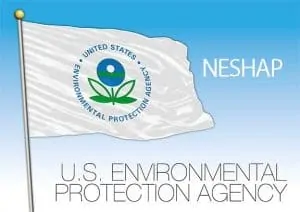
This action finalizes the residual risk and technology review (RTR) conducted for the Municipal Solid Waste (MSW) Landfills source category regulated under National Emission Standards for Hazardous Air Pollutants (NESHAP) contained within 40 Code of Federal Regulations (CFR) Part 63, Subpart AAAA. Additionally, the U.S. Environmental Protection Agency (EPA) is taking final action to:
The EPA is also finalizing minor changes to the MSW Landfills NSPS and Emission Guidelines (EG) and Compliance Times for MSW Landfills contained within 40 CFR Part 60, Subparts XXX and Cf. Specifically, the EPA is finalizing provisions to the most recent MSW Landfills NSPS and EG that would allow affected sources to demonstrate compliance with landfill gas control, operating, monitoring, recordkeeping, and reporting requirements by following the corresponding requirements in the MSW Landfills NESHAP. According to EPA, these final amendments will result in improved compliance and implementation of the rule and eliminate some of the confusion created by the previous version of the EPA rule.
We’ve pulled this information from the Final Amendments to Air Toxics Standards for Municipal Solid Waste Landfills and SCS will publish an SCS Technical Bulletin on our blog and social media sites. Please contact your Project Manager for details specific to your operation.
Approximately 738 MSW landfills are subject to the NESHAP.
On February 25, 2020, EPA finalized amendments to the 2003 NESHAP for MSW Landfills. EPA issued air toxics standards for the MSW Landfills source category in 2003 that established emission limitations based on maximum achievable control technology (MACT) standards for hazardous air pollutants (HAP) from major and area sources.
The rule required MSW landfills greater than 2.5 million megagrams (Mg) and 2.5 million cubic meters with uncontrolled emissions greater than 50 Mg/year of non-methane organic compounds (NMOC) to install and operate a gas collection and control system (GCCS). Most emissions from MSW landfills come from the continuous biodegredation of the MSW. Landfill gas contains methane, carbon dioxide and more than 100 different NMOC, including, but not limited to, vinyl chloride, ethyl benzene, benzene and toluene.
Based on the RTR, EPA is finalizing no changes to the existing standards because the agency determined the risks to be acceptable with an ample margin of safety to protect public health and the environment. In addition, EPA did not identify any new cost-effective emission controls for MSW landfills. However, EPA is finalizing several minor amendments to reorganize and streamline requirements for MSW landfills that will improve the clarity, compliance and implementation of the rule. These include:
The Clean Air Act (CAA) requires EPA to regulate toxic air pollutants, also known as air toxics, from categories of industrial facilities in two phases. The first phase is “technology-based,” where EPA develops standards for controlling the emissions of air toxics from sources in an industry group or “source category.” EPA bases these MACT standards on emission levels that are already being achieved by the best-controlled and lower-emitting sources in an industry. Within 8 years of setting the MACT standards, the CAA directs EPA to assess the remaining health risks from each source category to determine whether the MACT standards protect public health with an ample margin of safety and protect against adverse environmental effects. This second phase is a “risk-based” approach called residual risk. Here, EPA must determine whether more health-protective standards are necessary.
Every 8 years after setting MACT standards, the CAA requires EPA to review and revise the standards, if necessary, to account for improvements in air pollution controls and/or prevention and to address any residual risks that still remain after the MACT is implemented.
The CAA requires EPA to assess the risk remaining after application of the final air toxics emission standards; known as a residual risk assessment. Based on the completed risk assessment, available health information, and associated uncertainties, EPA determined risks from the MSW Landfills source category are acceptable and provide an ample margin of safety to protect public health. EPA estimates the maximum individual lifetime cancer risk for inhalation for the source category to be less than 10-in-1 million.
The CAA requires EPA to assess, review and revise air toxics standards, as necessary, taking into account developments in practices, processes and control technologies. The technology review of the standards for MSW Landfills did not identify any developments that would further reduce HAP emissions beyond the original NESHAP.
Download a copy of the final rule notice from EPA’s website at the following address: https://www.epa.gov/stationary-sources-air-pollution/municipal-solid-waste-landfills-national-emission-standards.
SCS will publish an SCS Technical Bulletin on our blog and social media sites. Please contact your Project Manager for details specific to your operation.
SCS Customer Support:
800-767-4727
Local Offices or Find a Specialist
National Emission Standards for Hazardous Air Pollutants: Stationary Combustion Turbines Residual Risk and Technology Review 40 CFR Part 63
This action finalizes the residual risk and technology review (RTR) conducted for the Stationary Combustion Turbines source category regulated under national emission standards for hazardous air pollutants (NESHAP). In addition, EPA is taking final action addressing requirements during periods of startup, shutdown, and malfunction (SSM)
and to add electronic reporting requirements.
The EPA is finalizing its proposed determination that the risks from this source category due to emissions of air toxics are acceptable and that the existing NESHAP provides an ample margin of safety to protect public health. The EPA is also finalizing its proposed determination that EPA identified no new cost-effective controls under the technology review that would achieve further emissions reductions from the source category.
This final rule is effective on March 9, 2020. The incorporation by reference (IBR) of certain publications listed in the rule is approved by the Director of the Federal Register as of March 9, 2020.
For questions about this final action and electronic reporting requirements, contact:
Melanie King, Sector Policies and Programs Division (D243-01), Office of Air Quality Planning and Standards, U.S. Environmental Protection Agency, email
address: .
For specific information regarding the risk modeling methodology, contact Mark Morris, Health and Environmental Impacts Division (C539-02), Office of Air Quality Planning and Standards, U.S. Environmental Protection Agency, email address: .
For information about the applicability of the Stationary Combustion Turbines NESHAP to a particular entity, contact Sara Ayres, Office of Enforcement and Compliance Assurance, U.S. Environmental Protection Agency, email address: .
The environmental reporting season is just around the corner. Every year Ann O’Brien publishes a table to help you determine your reporting obligations. The table summarizes the most common types of environmental reports due to environmental regulatory agencies in Illinois, Indiana, and Wisconsin, along with respective due dates.
Table: environmental regulatory agencies in Illinois, Indiana, and Wisconsin
The professional engineers and consultants at SCS Engineers can help you navigate the local, state, and federal reporting obligations and permitting for your business, in your region, and in your industry. Contact us at or find a professional like Ann, nearest you.

Thanks, Ann!
An environmental insurance claim is simply the response and mitigation of an environmental issue or event paid for by an environmental insurance policy. Similar to an auto or home insurance claim, a company or individual purchases this type of policy to protect them in case a matter arises about their facility, operations, or property resulting in a regulatory requirement for investigation and remediation; forming the basis for a submitted claim. Such responses cost money, often a lot of it, and the environmental insurance policy is there to pay for the costs associated with the investigation and remediation of any environmental issues.
Any environmental issue can result in an environmental claim, so it is essential that you have the right policy in place to cover a particular claim. Typical issues or events include:
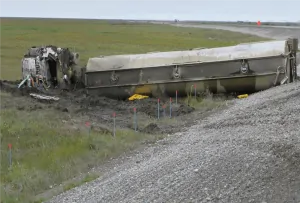
Insurance clients submit notice to the insurance company that an environmental issue occurred or was discovered which requires investigation and corrective action. The onus is on the client to provide sufficient information to substantiate a claim submittal. The insurance company reviews this information in their evaluation of coverage for the issue under the policy.
When a new claim is submitted to the insurance company, the client must provide information that substantiates that an issue exists and that further investigation and corrective action is required. Often their substantiation consists of the initial technical details about the nature and extent of the environmental problem. Claims analysts generally have a strong legal background but may lack technical environmental expertise; this is when insurance support services become valuable. The following paragraphs summarize each step in the process and how SCS insurance support assists claims analysts through the process.
Once the insurance company receives a notice of claim, they determine whether the client’s policy provides coverage for the specific issue or event that constitutes the claim. A claims analyst evaluates the specifics of the claim to determine if the associated details and circumstances fall within the specifics of the client’s policy. If so, coverage is usually accepted. If not, coverage is generally denied.
SCS’s role is to provide an evaluation of the technical aspects of the claim so that the claims analyst can take the distilled facts and compare them against the specifics of the policy; often called a “Source and Timing” evaluation. Take, for example, an underground storage tank (UST) release at a gasoline station. In this example, free product (gasoline) is observed in an on-site monitoring well where no free product has previously or recently been identified.
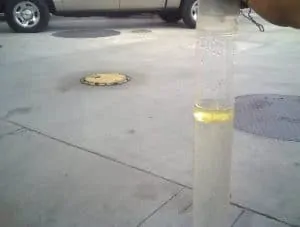
The station owner or their environmental consultant reports the apparent new release to the regulator, and a confirmed discharge is recorded. The property owner than notifies the insurance company of a gasoline release to the environment.
As part of the “Source and Timing” evaluation, SCS’s insurance support reviews tank system leak detection and inventory records, tank system tightness testing records, previous groundwater monitoring data, reports of any earlier releases at the facility, and any other information or data about the facility and the subject release. The goal is to identify:
If enough information is available to make these determinations, then the claims analyst compares the SCS report to the coverage specifics and exclusions included in the policy; determining if the event is covered. The claims analyst will usually try to make a coverage determination on their own if the facts are relatively straightforward, but often that is not the case, and the assistance of insurance support services is necessary.
This process can be straightforward, such as in the case of a tanker truck rollover or industrial facility chemical spill, but is often more complicated when insufficient information is available to make a source and timing determination. In the latter case, the claims analyst issues a Reservation of Rights letter, stating that the insurer is not accepting or denying coverage at this time as the circumstances of the claim are still under evaluation and investigation.
Claims can be denied if the incident occurs before or after the policy period; if the source or type of incident are not included or are specifically excluded under the policy; or if the incident occurred because of the client’s negligence. If coverage is denied no further actions are generally necessary on the part of the insurance company. Whether a claim is accepted or denied is often more complicated than what we’ve discussed here.
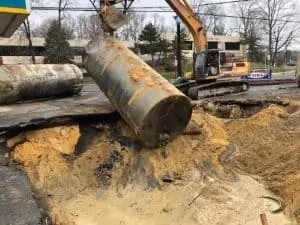
The claim is accepted; undoubtedly good news for the client. What happens now is that the claim becomes “Active,” requiring among other things for the claims analyst to set reserves. A reserve is an estimate of what the claim is going to cost the insurance company. Your insurance support consultant can provide a rough approximation of the estimated costs to achieve regulatory closure, which includes all expenses incurred from investigation through remediation, post-remediation monitoring and reporting.
Early in the life of a claim, these are preliminary estimates that are refined as a project progresses, often requiring the claims analyst to adjust their reserves; important to the insurance company as future reserves impact financial forecasts. Insurance support services will develop the cost-to-closure estimate based on all available information and data, as well as their professional experience on similar projects. The insurer wants the most experienced environmental consultants and engineers on the case because their estimates are more likely to be on target and identify potential regulatory issues or risks.
From the insurer’s standpoint, the primary goal is to maintain a high level of responsiveness to their clients and process requests for reimbursement against the claim. The role of your insurance support team can continue by managing quality control and evaluation of site-specific activities; ensuring that the investigation and cleanup are reasonable and appropriate given the environmental conditions at the site, all applicable regulatory requirements, and costs consistent with industry standards for recovery. The client and their environmental consultant are required to provide the insurer and the insurance support consultant documentation of the work as follows:
Over the life of a claim, insurance support may correspond with the project consultant on behalf of the insurer, conduct site visits, and be asked to participate in meetings, conference calls, and mediations. The overall goal of your insurance support consultant is to assist claims analysts in closing a claim in the most time-efficient, cost-effective manner possible within all regulatory rules and guidelines.
Once an active claim−environmental project has achieved regulatory closure, the claims analyst begins the administrative process of closing the claim. From SCS’s insurance support standpoint, all that remains is to obtain the appropriate documentation from the regulator confirming that the subject project is approved for closure and that no further actions are required.
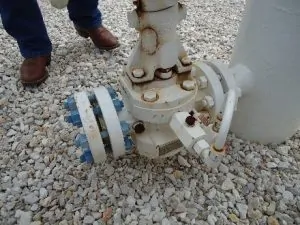
There are other circumstances which may result in closing a claim, such as exceeding the maximum total cost that can be paid out by the policy, non-compliance with policy requirements, or new information coming to light which results in a change in coverage position by the insurer. In some cases, such as when there is a change in coverage position or the cause of the issue can be attributed to a third party equipment failure, the insurer may seek to recover costs expended from the client and third-party policies. That process, called subrogation, may require the expertise of your insurance support specialist and at times their testimony as an expert witness.
There are several ways that SCS helps our insurance clients and other clients. The involvement of insurance companies is becoming more pervasive throughout environmental consulting and engineering in all business sectors. The combination of SCS’s industry expertise, contacts associated with our insurance support services, and our Federal, State, and local level regulatory expertise brings more knowledge and efficiency to each project. SCS offers a wide range of engineering and environmental services, a national presence, and a positive established industry reputation.
Our clients appreciate being able to draw upon our insurance-related expertise to assist them with their submittals, interpreting insurance requirements, and liaising with insurance companies as part of our core capabilities.

Mr. Michael Schmidt is an accomplished industry leader with nearly 30 years of progressively responsible experience in the environmental consulting and environmental insurance industries. He has specific expertise focusing on the evaluation of environmental risks and liabilities associated with insurance claims and underwriting, site investigation and remediation, due diligence, and project management.
Feel free to use our website to share our blogs, whitepapers, case studies, events, and news. SCS respects your privacy.
Before the Court: EPA admits that it has failed to meet its nondiscretionary obligations to implement the Landfill Emissions Guidelines, as compelled by the CAA. The only questions before the Court were whether the Plaintiffs have standing and, if so, how long to give EPA to comply with its overdue nondiscretionary duties under the Landfill Emissions Guidelines. The Plaintiffs are the States of Illinois, Maryland, New Mexico, Oregon, Rhode Island, California, Vermont, and the Commonwealth of Pennsylvania.
Ruling: Plaintiffs have standing, and the EPA must approve existing submitted plans by September 6 and issue the federal plan by November 6.
Impact on Landfill Owners/Operators: This will create some confusion, as landfills will be working on getting revised rules in place while at the same time start complying with the old EG rule. We are already doing that with XXX sites, but this ruling adds complexity. If EPA keeps to the schedule and we have final approved revised rules by March 2020, landfills won’t have to do as much under the old rules before new ones take effect.
Contact your SCS Project Manager for more information, email us at , or follow SCS on your preferred social media.
Air rules are complicated. Landfill emissions differ from typical industrial sources resulting in rules that vary in significant ways. If you’re a landfill owner responsible for compliance, a regulator charged with monitoring landfills, or new to the industry, join us for this informative Air & Waste Management Association live presentation. The webinar will help you will learn how the rules affect landfills, understand what must be submitted and when, and the steps to take for compliance.
This paper, presented at A&WMA’s 111th Annual Conference details the Tier 4 process and the potential issues that have arisen from conducting a Tier 4. This paper also assesses potential Tier 4 sites, exceedance reporting, wind monitoring, additional SEM equipment requirements, penetration monitoring, notification and reporting requirements, and impacts on solid waste landfills that will use the Tier 4 SEM procedure for delaying GCCS requirements. This paper reviews the changes between the draft NSPS and the final version of the new NSPS that was promulgated.
Click to read or share the paper, and learn about the authors.
This article discusses global air quality and how the collaboration between policy-makers and the scientific community can have a continued positive impact on air quality in the U.S. This collaboration has been the primary cause for the improvements observed in air quality over the past few decades.
U.S. Environmental Protection Agency (EPA) programs, such as the New Source Performance Standards (NSPS), New Source Review, and Maximum Achievable Control Technology standards, have all had a significant impact on improving air quality by lowering the ambient concentrations of NOX, VOC, CO, SOX, and PM.
Some areas, such as southern California, have committed to working toward electrifying the transportation network, implementing more stringent standards on diesel fuel sulfur content, and encouraging heavier utilization of public transportation.
Author: SCS Engineers’ Ryan Christman, M.S., is an air quality engineer and environmental management information systems specialist with experience in the oil and gas industry and the solid waste industry. He is just one of SCS’s outstanding Young Professionals.